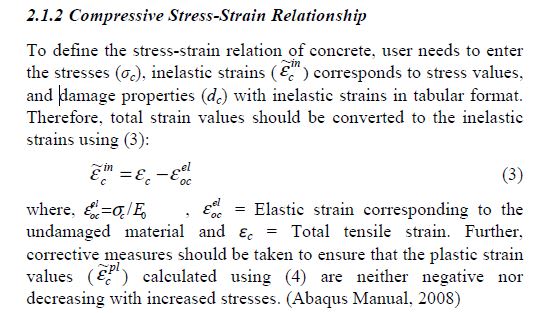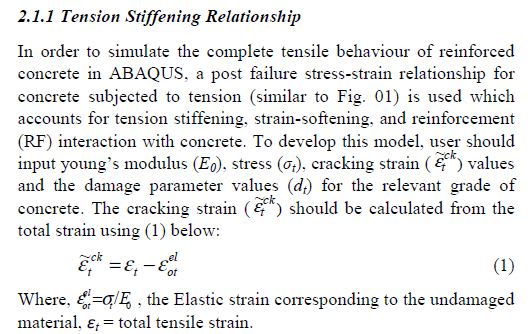Hello Adrianuk,
yes, they have different values for different grades of concrete.
Which code do you use?
I am just familiar with Eurocode 2, and the inelestic compressive behaviour is defined in Eurocude 2 with the following equation:
σc = fcm•(kη-η^2)/(1+(k-2)η) , η ≤ ε_cu1/ε_c
For the values of strain greater than ε_cu1 you can search for suggestions of some researchers.
I defined tensile behaviour as yield stress-displacement curve according to equation proposed by Hordijk (1992).
As Martensite Steel mentioned, the most important part is that the input parameters are inelastic strain or displacement and yield stresses. This means that you just enter the values of strain which correspond to the values of stress greater than 0.4fcm, if we talk about concrete sibjected to compression according to Eurocode 2 and the values of strain (displacement) which correspond to the values of stress greater than fctm if the concrete is subjected to tension.
And remember that the first values of inelastic strains must be 0 when you enter the values in column in abaqus, so you have to translate the beginning of your coordinate system from 0,0 point to the point ε_el,0.
If you would like to define tensile behaviour as yield stress-displacement, I can explain you what I used.



![[2thumbsup] [2thumbsup] [2thumbsup]](/data/assets/smilies/2thumbsup.gif)